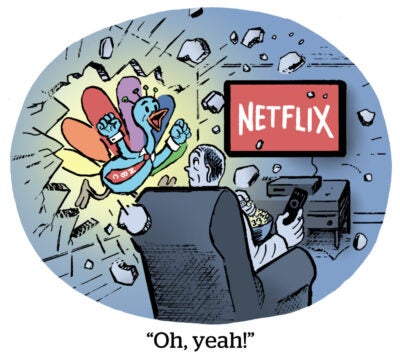Here’s today’s AdExchanger.com news round-up… Want it by email? Sign up here.
Drop Til You Shop
Livestream shopping is a big sales channel in China, but the trend hasn’t been successful in the US (not yet, at least).
American retailers and major store brands aren’t waiting, though.
On Tuesday, Walmart introduced Walmart Creator, a program for social influencers and content creators to make a commission on the sales they drive on the web or within in-app browsers.
“We have seen this rise of social influence, social discovery, where customers are inspired about what they see in those platforms,” Walmart CMO William White tells Bloomberg.
Amazon, for its part, has tried to improve live shopping adoption with carrots for sellers, including the ability to retarget users who view a brand’s livestream by email or via the Amazon DSP.
And companies such as Firework and TalkShopLive help brands go direct to customers. Some brands prefer to partner with this type of provider, because it’s the brand that owns the data on those shoppers, as opposed to YouTube, Instagram, TikTok or Amazon, which don’t disclose user-level data.
Still, this may not be a case of “If you build it, they will come.” Just because brands, retailers and the biggest social platforms create products doesn’t mean American consumers will change their shopping habits.
Keep It Clean
Brands are wrestling with questions like, uhhh … what are data clean rooms and how do they work?
But although the industry might still be trying to figure out the basics, that’s not the only thing standing the way of adoption.
Clean rooms tech providers need digital media and ad tech to become more interoperable – otherwise, the walled gardens could end up drinking their milkshake.
If advertisers commit more to walled gardens, then walled garden-based clean rooms, like Google’s Ads Data Hub, could seize the opportunity from more open industry versions.
But Google delivered a surprise win for data clean rooms last week with the release of Publisher Advertiser Identity Reconciliation, or “PAIR,” which allows advertisers to match their first-party data (only email addresses to start) with a publisher’s encrypted audience data in order to identify and attribute matches. The big hook is that Google will allow this audience matching through third-party SSPs and third-party data vendors. LiveRamp, InfoSum and Habu do the matching, not Google.
“Frankly, I think other walled gardens are going to come along,” InfoSum CEO Brian Lesser told analyst Joanna O’Connell during an Advertising Week panel, Ad Age reports. “I think that Meta will do the same thing, probably not exactly the way Google does it, but … they’re under a lot of pressure to figure out, ‘OK, well how do we do this?’”
Take Two
The past couple years haven’t been kind to the movie theater business, but the whole category is chomping at the bit to recover lost revenue and find new revenue-generating channels.
National CineMedia, for example, got itself ready for the “post-pandemic” (whatever that means) world by aggregating first-party data into audience segments. Now, NCM is partnering with Spotlight Cinema Networks, another in-theater ad network, to add more cinema screens to its distribution footprint.
The two networks will combine to form Elevate Cinema Network and span 2,700 screens in the US (1,500 from NCM and 1,200 from Spotlight).
Pre-movie promos are an unconventional blend of ad inventory. They’re kinda TV-like, they’re sorta experiential, but are actually sold most often as digital out-of-home. But cinema ad sellers know how to package inventory for digital buyers. The merged Elevate network pitches itself as a way to reach “captive” and “engaged” audiences, MediaPost reports.
Measurement is a question, though. Unless a theater has WiFi people can connect to, there’s no great way to tie ad exposure to cinemagoers.
But Wait, There’s More!
Why LinkedIn is stepping up its original video and audio content ambitions. [Digiday]
Meta is forced to sell Giphy after a British antitrust order. [NYT]
The hottest app right now is one that makes teens say nice things about each other. [WSJ]
Volta makes its media network equally accessible via programmatic. [release]
You’re Hired!
Growth marketing agency Shoelace promotes Cory Dobbins from strategy chief to CEO. [tweet]
Merkle strengthens its Americas leadership team with four appointments, including Amanda Moore as chief growth officer and Tim Perlstein as CMO. [release]

















